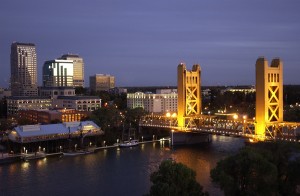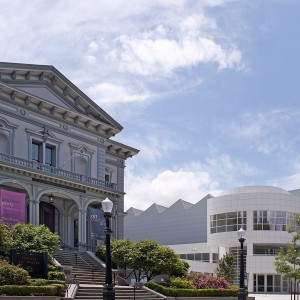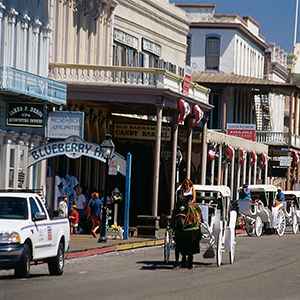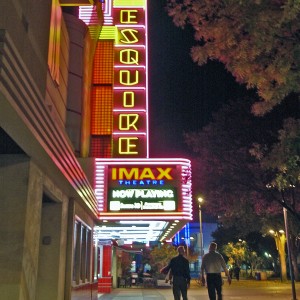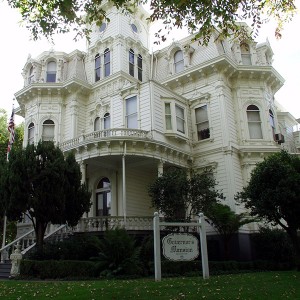“America’s Most Diverse City” saw its heyday when, at the height of the California Gold Rush, it became a major distribution point, a booming commercial and agricultural center, and a terminus for wagon trains, stagecoaches, riverboats, the telegraph, the Pony Express, and the First Transcontinental Railroad. Long before the area was settled, the Nisenan and Plains Miwok tribes lived a peaceful existence beneath the sturdy oaks, their fundamental needs met by wild-harvesting the countryside rich with dietary staples, and their inadvertent gift to future settlers a legacy of careful stewardship ultimately bequeathed as little more than a faint footprint on the land that would one day become the Capitol of California. Groups of fun prospectors heading to Sacramento will appreciate its classic Mediterranean climate – the River City holds the notable distinction of being the sunniest location on Earth July through September. Sacramento is a shopper’s and foodie’s dream, a veritable bonanza of cultural diversity and “golden land” of educational opportunity. Browse the finest art museum West of the Mississippi or kick back and enjoy 28 miles of gorgeous California scenery aboard River Train; charmingly Western “Old Towns” treat travelers on Golden State excursion to an authentic taste of days gone by, and tours of the architecturally stunning Capitol building provide a wonderful cross section of the city’s rich history. The Sacramento and American Rivers promise river rats plenty to do on their grand waterways; historic Jedidiah Smith trail presents 32 stunning miles of excellent riding and hiking prospects and Sutter Gold Mine tours lead more intrepid spirits into the belly of the Earth, visiting upon them shadows of a day in the life of a wild and wooly ‘49er. The seasoned trailblazers at Exploring America are ready and waiting to map out your Sacramento trip of a lifetime; “wagons, ho!”

Sample Itineraries
Sacramento 2 Day Group Tour
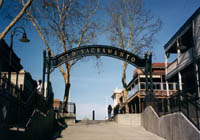
- See Governor’s Mansion
- Authentic Live Entertainment
- Over 400 Zoo Animals
Sacramento 3-Day Group Tour
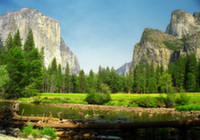
- Two Nights Lodging
- Four Museums
- Yosemite National Park
Attractions
- Crocker Art Museum
- Sacramento Zoo
- Yosemite National Park
- Jelly Belly Factory
- Panning for Gold
- Discovery Museum
- California State Railroad Museum
- Wells Fargo Museum
- Old Town Sacramento
- Esquire IMAX Theatre
- California Museum
- Governor’s Mansion
Crocker Art Museum
Art connoisseurs embarking on a California holiday must plan a visit to this fabulous, multi-genre assemblage of exquisite European paintings, master drawings, international ceramics and significant African, Asian, and Oceanic works, with prized collections dating from the Gold Rush era to the present day. Landmark Crocker Art Museum, one of the most important art institutions in the Golden State and the longest continuously operational art museum in the West, is located in the State Capitol of sunny Sacramento. The museum is the grand vision, fulfilled, of prominent local banker/land baron Judge E.B. Walker and his wife Margaret; its fantastic core collection was assembled by the couple in the early 1870s and has flourished ever since – so much so that the historic Victorian Italianate art gallery building was quickly outgrown and the adjoining Teel Family Pavilion was constructed to accommodate expansion, effectively tripling the museum’s size to a massive 145,000 square feet, adding four times the space for traveling exhibitions and three times the space reserved for showcasing its incredible permanent holdings. The Art Museum regularly offers a diverse spectrum of special events, exhibitions and programs to complement its stunning collections: films, fundraisers, concerts, classes and more. The anchor of the Crocker’s fantastic photography collection is its wealth of American photography, with examples representing major artistic movements ranging from surrealism to street aesthetic, new topographies, and the conceptual; featured photographers include Ansel Adams, Edward Henry Weston, Richard Misrach and Marion Post Wolcott. Current exhibition African American Art: Harlem Renaissance, Civil Rights Era, and Beyond showcases an exciting presentation of 100 paintings, sculptures, and photographs by iconic African American artists, drawn from the collection of the Smithsonian American Art Museum; the Crocker is the only West Coast venue for this stunning survey of African American visual heritage.
Sacramento Zoo
The Sacramento Zoo, today, is a far cry from its humble beginnings as a tiny four acre attraction that opened in 1927 as the William Land Park Zoo, with a menagerie of 40 animals assembled from the collections of various parks around the city. In 1949, the zoo’s first elephant was purchased with funds raised from a drive sponsored by the local newspaper; six years later, a companion joined her. In the 1960s, the zoo increased in size to its current 14.2 acres and new habitat sprung up everywhere with the help of a $300,000.00 zoo improvement bond. A grizzly and two orangutans took up residence in 1965-admisssion was twenty five cents; in 1970 the name was changed to Sacramento Zoo. Over the years, with every wonderful improvement and addition to the Zoo family came learning and with learning new change was implemented; now home to over 140 native, rare and endangered species, the wonderful, foot-and-family friendly Sacramento Zoo inspires appreciation, respect and a connection with wildlife and nature through its many exhibits and programs highlighting the objectives of recreation and conservation. A self-guided animal art tour treats visitors to a wide array of fine artistic renderings around the park; the Giraffe Encounter allows a delightful meet-and-greet with long necked occupants from the Tall Wonders Deck. A fantastic local browse program allows donations of non-toxic tree and shrub clippings and trimmings to help feed the animals; this popular little city zoo relies on the benevolence of community members and kind patrons to ensure its upkeep, growth and preservation as a safe home and haven for its multitude of furred and feathered, finned and winged residents and favorite attraction of locals and tourists, alike.
Yosemite National Park
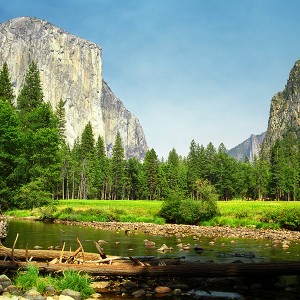 Glorious, 1,189 square mile Yosemite National Park, legendary for its magnificent granite cliffs, crystal clear streams and waterfalls, breathtaking vistas, and three remaining Giant Sequoia groves and immortalized time and again in artistic rendition is a beloved destination for groups of adventurers on California excursion. Natural attractions Half Dome, El Capitan, Sentinel Dome and the Tunnel View draw hordes of hikers, rock climbers and photographers annually; the beautiful high country affords visitors first rate views of the spellbinding scenery of Tuolumne and Dana Meadows, the Clark and Cathedral Ranges and the Kuna Crest. Almost 95% designated wilderness area, the park is one of the largest and least fragmented habitat blocks in the Sierra Nevada, supporting a wide diversity of native plants and animals, and contains five major vegetation zones: chaparral/oak woodland, lower montane forest, upper montane forest, subalpine zone, and alpine. Of California’s 7,000 plant species, approximately half occur in the Sierra Nevada and more than 20% of them within Yosemite. Originally occupied by indigenous Paiute and Sierra Miwok peoples, the area has been populated for over 3000 years, long before the Gold Rush brought floods of prospectors, who wrestled with the native inhabitants for possession of the lands rich with valuable natural resources. Scottish-born naturalist John Muir published a series of articles popularizing the area, thereby generating scientific interest in it, and ultimately convinced the State of California to protect the land from overgrazing, logging and misuse; Yosemite National Park was created in 1891, although California retained control of the Yosemite Valley and Mariposa Grove; poor stewardship saw their steady-and alarming-decline. Consistent efforts by Muir and his Sierra Club culminated with a three-day Yosemite “camping” trip with President Theodore Roosevelt near Glacier Point, during which time he managed to convince the President to take control of Yosemite Valley and Mariposa Grove. Roosevelt’s eventual signing of a bill in 1903 returned the Valley and Grove to the federal government, halting their destruction.
Glorious, 1,189 square mile Yosemite National Park, legendary for its magnificent granite cliffs, crystal clear streams and waterfalls, breathtaking vistas, and three remaining Giant Sequoia groves and immortalized time and again in artistic rendition is a beloved destination for groups of adventurers on California excursion. Natural attractions Half Dome, El Capitan, Sentinel Dome and the Tunnel View draw hordes of hikers, rock climbers and photographers annually; the beautiful high country affords visitors first rate views of the spellbinding scenery of Tuolumne and Dana Meadows, the Clark and Cathedral Ranges and the Kuna Crest. Almost 95% designated wilderness area, the park is one of the largest and least fragmented habitat blocks in the Sierra Nevada, supporting a wide diversity of native plants and animals, and contains five major vegetation zones: chaparral/oak woodland, lower montane forest, upper montane forest, subalpine zone, and alpine. Of California’s 7,000 plant species, approximately half occur in the Sierra Nevada and more than 20% of them within Yosemite. Originally occupied by indigenous Paiute and Sierra Miwok peoples, the area has been populated for over 3000 years, long before the Gold Rush brought floods of prospectors, who wrestled with the native inhabitants for possession of the lands rich with valuable natural resources. Scottish-born naturalist John Muir published a series of articles popularizing the area, thereby generating scientific interest in it, and ultimately convinced the State of California to protect the land from overgrazing, logging and misuse; Yosemite National Park was created in 1891, although California retained control of the Yosemite Valley and Mariposa Grove; poor stewardship saw their steady-and alarming-decline. Consistent efforts by Muir and his Sierra Club culminated with a three-day Yosemite “camping” trip with President Theodore Roosevelt near Glacier Point, during which time he managed to convince the President to take control of Yosemite Valley and Mariposa Grove. Roosevelt’s eventual signing of a bill in 1903 returned the Valley and Grove to the federal government, halting their destruction.
Jelly Belly Factory
Have you ever sat, long-anticipated DVD in the player, lights dimmed, all comfy in your favorite chair- or bean bag-waiting for the trailers to roll and the flick to start-pecking through a fresh bag of Jelly Bellies? Go ahead-admit it. We all have our favorites, and discovering new combos is a never-ending source of excitement amongst fans of the best jelly beans in the world! Trekkers to the Golden State on Sacramento excursion won’t want to miss a stop at the fabulous working factory in Fairfield, California. Fans of the more than 150 flavors of the sugary legume-shaped favorites will find a veritable beananza of fabulous Jelly Belly trivia, notable works of bean art, and the renowned Jelly Belly Fleet inside the sparkling factory walls. Delightful-and free-40 minute guided weekday tours depart every ten minutes or so and allow you to unravel some of the mystery and experience all the magic of a real working jelly bean factory; learn why it takes up to 20 days to make some flavors-as well as a few “special secrets” and sweet facts. Let your nose help you guess what’s cooking the day of your visit-the air around you will be filled with the intoxicating perfume of fresh Jelly Bellies-is that chocolate pudding, toasted marshmallow, or buttered popcorn in your hair? If endless samples haven’t dented your appetite, order up some hot, bean-shaped lunch at Jelly Belly Café; the adjacent gift shop tempts you to indulge in “a little something for later.” Connoisseurs will enjoy the ultimate Chocolate and Wine Experience- a pairing of five select wines from Suisun Valley Wineries with delicious hand-made confections from the Jelly Belly Chocolate Shoppe; take home your souvenir wine glass and score a front of the line Factory Tour Pass! Photo ops are available-be sure to grab your fellow aficionados, say “bean!” and create a lasting memory of what’s been called “The best factory tour on Earth;” an amazing success story of the cult classic candy, free for the walking.
Panning for Gold
James W. Marshall discovered gold on the South Fork of the American River while building a sawmill with John Sutter in 1848-the event that triggered the greatest mass movement of people in the Western Hemisphere and the spark that ignited the spectacular growth of the West over the next few decades. Today, adventurous groups on California excursion can see a wonderful replica of the original sawmill and more than 20 historic buildings in an authentic ghost town. Lessons are offered to eager explorers who may then try their hand panning for gold in the scenic American River; energetic types will enjoy rejuvenating woodland hikes or picnics in a stunning setting overlooking the picturesque river canyon, where Gold Rush Pioneer James W. Marshall rests, today. The discovery site, located in the still visible tailrace of Sutter’s sawmill, in present day Coloma, is one of the most significant historic sites in the nation; a landmark monument to Marshall’s discovery to points to where it all began. Unique events and exhibits are scheduled throughout the year and during Living History Days visitors are treated to an entertaining and history lesson as the park is filled with lively docents dressed in period clothing roaming about or manning demonstration stations featuring fascinating displays of basic pioneering and woodsman skills. Guided walking tours of the 576 acre Marshall Gold Discovery State Historic Park, located 36 miles East of Sacramento on Highway 49 between Placerville and Auburn, are available year-round.
Discovery Museum
This self-proclaimed dynamic regional hub engages and inspires visitors of all ages and walks to investigate the myriad wonders, possibilities, and responsibilities of modern science, tendering eager scientists and intrepid space pioneers hands-on learning opportunities through an extensive array of fascinating displays and fun and engaging permanent and rotating exhibits. In the Challenger Learning Center – an interactive space mission simulator consisting of a realistic Mission Control and Spacecraft – guests assume the roles of astronauts, scientists and engineers and set out on their choice of three critical NASA missions; in Robotics Lab, they assemble and program actual robots. “Digging Up the Past” provides the thrilling experience of a real, dig allowing the budding archaeologists amongst you to work in teams implementing specific tools, methodology and technique to excavate intriguing “ancient” relics left behind by mysterious (fictional) civilizations. Enchanting twenty-minute star shows treat the astronomers in your bunch to a dazzling introduction to the endless night sky over Sacramento in Northern California’s only public planetarium; you’ll leave with a pocket full of backyard sky watching tips! Current exhibit, “Blast from the Past: Rockin’ Rocks & Diggin’ Dinos” lets guests hear what rocks, crystals, fossils and other finds have to say about ancient life on Planet Earth. Lovers of all living things will truly enjoy the Nature Discovery Room, featuring indoor animal exhibits as well as exciting and educational programs and activities specially tailored for children; meet the amazing creatures who call the Discovery Science Center home. Bring a lunch – once you’ve explored everything there is to see, head for the woods, unpack, kick back and relax in the serenity of a picnic area surrounded by 14 acres of native flora and fauna. P.S.: don’t miss the butterfly garden!
California State Railroad Museum
This fantastic institution, monument to the railways that built our great Nation, part of the State Park system and ever-popular attraction in the heart of colorful Old Sacramento had its origins in 1937, when a determined group of railroad enthusiasts in the San Francisco Bay Area formed the Pacific Coast Chapter of the Railway & Locomotive Historical Society. The organization labored tirelessly at promoting the idea of a railroad museum, and donated 30 historic locomotives and cars to the California Department of Parks and Recreation to comprise the core of a State-operated exhibition in Sacramento. The Museum’s pioneer facility, the Central Pacific Railroad Passenger Station, launched in 1976; the Railroad History Museum saw completion in 1981. Steam-powered passenger train service on the Sacramento Southern Railroad began in 1984, and the Central Pacific Railroad Freight Depot opened just three years later. The Railroad Museum assumed responsibility for Railtown 1897 State Historic Park in Jamestown- “The Movie Railroad” – on July 1, 1992. Today, the Museum features 21 painstakingly restored locomotives and cars, some circa 1862. The spectacular “Sierra Scene” exhibit recreates in large-scale mockup a construction scene high in the wild Sierra Nevada representing Donner Pass circa 1867; a wonderful array of fascinating permanent exhibits featuring an ever-changing arrangement of photography, ephemera and artifacts assist in illustrating how the powerful influence of the railroads changed American Society forever. Enchanting “excursion” train rides offer railroad aficionados in search of that quintessential experience relaxing 45 minute riverfront train rides in closed coach cars, open-air gondolas and a first-class observation car pulled by vintage diesel locomotives from the Museum’s extensive collection. Experience all the sights and sounds of train travel of bygone days; enjoy lemonade and cookies served in the air-conditioned comfort of elegant 1920s observation lounge car El Dorado as you roll along the Sacramento River!
Wells Fargo Museum
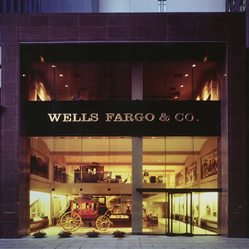 This famous financial services company boasting the slogan, “Together, We’ll Go Far” and a celebrated history of timeless strengths: security, reliability, innovation and progress – was founded in 1852 by Henry and William Fargo, and has become a legendary part of the true American West. Wells Fargo’s sturdy Concord stagecoaches were crafted of the finest materials by the Abbot-Downing Company of Concord, New Hampshire, coach makers of sterling reputation. Their stagecoaches provided expeditious service across a vast and unforgiving territory through the nineteenth century. From 1866-69, Wells Fargo operated every major stagecoach route west of the Missouri River, covering 2,500 miles of territory. Skilled drivers guided coaches pulled by teams of four or six horses, at average speeds of five miles per hour, with rest stops every twelve miles to change horses, and about every 45 miles to allow driver and passengers a chance to eat; close your eyes for a moment, and just imagine yourself a passenger! Today, Wells Fargo has opened museums in Alaska, North Carolina, California, Minnesota, Pennsylvania, and Arizona, and stages historic exhibits in select corporate spaces across the country, each representative of the institution’s longstanding tradition of excellence. Two Sacramento Museum locations treat visitors on Golden State excursion to an intriguing cross section of Wells Fargo’s Western history through a series of remarkable exhibits; the Capitol Mall location showcases an authentic 1866 Abbot-Downing stagecoach, a priceless collection of vintage postal covers, an authentic working telegraph line, real gold specimens from the Sacramento area and scores of relevant artifacts, images, documents and furnishings. The Old Sacramento State Historic Park’s Museum presents for perusal a carefully re-created 19th century Express office and numerous genuine Wells Fargo, Gold Rush and Old West treasures.
This famous financial services company boasting the slogan, “Together, We’ll Go Far” and a celebrated history of timeless strengths: security, reliability, innovation and progress – was founded in 1852 by Henry and William Fargo, and has become a legendary part of the true American West. Wells Fargo’s sturdy Concord stagecoaches were crafted of the finest materials by the Abbot-Downing Company of Concord, New Hampshire, coach makers of sterling reputation. Their stagecoaches provided expeditious service across a vast and unforgiving territory through the nineteenth century. From 1866-69, Wells Fargo operated every major stagecoach route west of the Missouri River, covering 2,500 miles of territory. Skilled drivers guided coaches pulled by teams of four or six horses, at average speeds of five miles per hour, with rest stops every twelve miles to change horses, and about every 45 miles to allow driver and passengers a chance to eat; close your eyes for a moment, and just imagine yourself a passenger! Today, Wells Fargo has opened museums in Alaska, North Carolina, California, Minnesota, Pennsylvania, and Arizona, and stages historic exhibits in select corporate spaces across the country, each representative of the institution’s longstanding tradition of excellence. Two Sacramento Museum locations treat visitors on Golden State excursion to an intriguing cross section of Wells Fargo’s Western history through a series of remarkable exhibits; the Capitol Mall location showcases an authentic 1866 Abbot-Downing stagecoach, a priceless collection of vintage postal covers, an authentic working telegraph line, real gold specimens from the Sacramento area and scores of relevant artifacts, images, documents and furnishings. The Old Sacramento State Historic Park’s Museum presents for perusal a carefully re-created 19th century Express office and numerous genuine Wells Fargo, Gold Rush and Old West treasures.
Old Town Sacramento
Groups heading to sunny California will truly enjoy a trot through Old Sacramento, a lively and unique 28 acre historic shopping and entertainment district and popular tourist destination situated along the beautiful Sacramento River. At one time a burnt-out, flooded-out and absolutely dilapidated part of an area proclaimed the worst skid row west of Chicago, this wonderfully rehabilitated and thriving National landmark, the western terminus of the Pony Express postal system, the first transcontinental railroad and the transcontinental telegraph is absolutely jam-packed with things to do and see! Carriage-lined cobblestone streets run throughout Old Sacramento, where more than 50 well-preserved early Gold Rush commercial structures of various architectural influences frame marvelous historic museums and entertainment venues; authentic riverboat attractions, scenic railroad excursions, riverfront bike rides and more await itinerants seeking a satisfyingly Wild-Western experience. Dozens of old-fashioned storefronts invite browsing and shopping; eclectic cafes, charming sweet shops, rootin’ tootin’ saloons and dining establishments hawking a pleasing range of California-style menus tender hungry prospectors a quick, casual bite, dust-dousing and cool refreshment or classically elegant repast all steeped in “sepia-toned” ambiance; you’ll find everything from toothsome deli delights, specialty spuds, hotdogs and olive bars to pizza, Mexican, Indonesian and fresh Coastal seafood on Old Town’s tables. Be sure to check out the California State Railroad Museum, the Delta King Riverboat and the Old Sacramento Schoolhouse Museum – a fascinating, living replica of a one room 1800s schoolhouse functioning as a historic learning center. Need a little time to let your meal settle before hunting down dessert? Climb aboard a waiting horse-drawn carriage and be squired past notable points of interest in quaintly captivating Old Town, the “Sacramento of the Gold Rush.”Esquire IMAX Theatre
We all enjoy an escape to the movies now and again. We scan the marquee, make our decision, enter the lobby, purchase tickets and grab our popcorn and soft drink before making our way to the appropriate doorway and slipping into the cozy refuge of darkness where we find the perfect seat, nestle in, whisper a bit, glare at noisy patrons directly behind us or *accidentally* kick the seat of the offenders in front, and…wait. The lights dim; your conventional theater experience begins. When the feature has ended, you rise before the lights come back up and make your way out before the crush. Quintessential movie house fare and routine, right? Admit it. Something is missing…but what? Big screen buffs on Sacramento getaway who’ve never experienced the magic of IMAX 3D must make their way to The Esquire IMAX® Theatre, ideally situated downtown, adjacent to the Sacramento Convention Center! IMAX is more than just a “night at the movies;” it’s an entertainment event so real you feel it to your core; so magical it transports you places you’ve never been; so utterly immersive you actually feel you’re part of the action! Unique IMAX is an innovator with patented technology; a Hollywood insider that partners with celebrated moviemakers to enhance their mega-blockbusters and riveting documentaries and a thriving global enterprise; it’s going to the theatre to forget your at the movies. There’s only one IMAX, and once you’ve experienced it, there’s no going back. Come, find out what you’ve been missing with a movie night at Esquire! Patrons park for free Monday through Friday after 5:00 pm and all weekend long.
California Museum
A must-see on any West Coast itinerant’s agenda, the California Museum – home of the celebrated California Hall of Fame – treats its visitors to a vibrant cross-section of the Golden State’s rich history and unique contributions to our world, inspiring men, women and children to fearlessly pursue the “California Dream”. Fascinating signature exhibits anchor the experience while an ever-changing series of fresh, short-term presentations highlighting lesser-known people, places and stories treat guests to an absolutely engrossing California history lesson. The 3000 square foot “California Indians: Making A Difference” exhibit is the only one of its kind, created in Native voice and representing over 100 tribes across the state; the gallery showcases the contributions of indigenous California peoples through a presentation of hundreds of artifacts, works of art, 13 oral histories at 6 video stations and an interactive Native language kiosk. The 6-story Constitution Wall features dramatically sculpted words extracted from the California Constitution, each specifically chosen to inspire reflection on the freedoms guaranteed all Californians; depending on the angle of the light and time of day, different words, punctuated by the wall’s natural color scheme, as drawn from California’s landscape palette of forest, ocean and desert hues, naturally become more prominent. Established by former First Lady Maria Shriver in 2006 as a special tribute to remarkable individuals who embody California’s pioneering spirit and have made their mark on history, the California Hall of Fame introduces honorable inductees from all walks of life who have made notable achievements in a diversity of fields.
Governor’s Mansion
Groups en route to the Golden State will be delighted to find a stop at the California Executive Mansion – commonly referred to as “the Governor’s Mansion” – on their Sacramento itinerary. Guests are warmly welcomed by a competent and friendly staff, and escorted on a delightful promenade through history from the moment they step onto the lovingly manicured grounds that for 64 years courted the daily activities of thirteen of California’s First Families. The beautiful executive mansion on the corner of 16th and H Streets in downtown Sacramento, originally built in 1877 for local hardware merchant Albert Gallatin and his wife Clemenza, was purchased for $32,500.00 from Joseph and Louisa Steffens by the State of California in 1903. Resplendent in the manner of the day with such finery as Italian marble fireplaces, ornate, gilt framed mirrors from France and exquisitely handcrafted hinges and doorknobs, the 30-room Second Empire-Italianate Victorian mansion was suitably impressive, though somewhat dated, by then; it was, however, conveniently located and quite comfortable. Governor George Pardee and his family were the first official residents of the “new” Governor’s Mansion; today, select furnishings remain, left behind by important occupants over the decades, including the Pardee’s regal 1902 Steinway piano, authentic Persian rugs acquired by Mrs. Earl Warren and plush velvet sofas and chairs belonging to Governor Hiram Johnson, all contributing to the landmark home’s grand, if eclectic ambiance. The stately old residence has undergone a series of renovations over the years, and recently received a long-overdue , “full face lift”; it remains unoccupied since the Reagans, the last first family to call the Mansion home, moved on, and is now primarily employed as a venue for state and public events.


